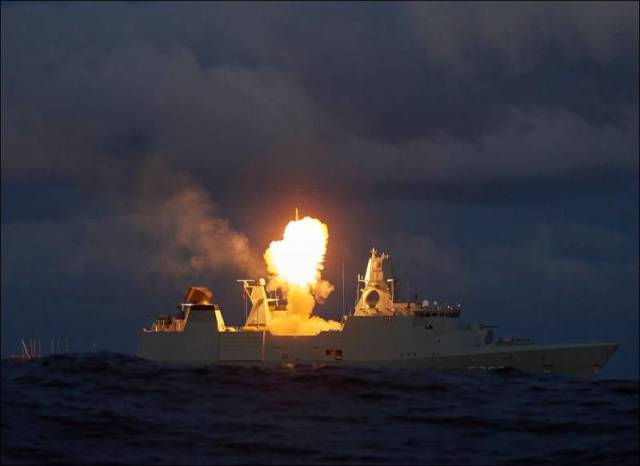
Image source: topwar.ru
The Iver Huidfeldt Niels Juel-class frigate of the Royal Danish Navy tested the SM-2 missile for the first time off the coast of Norway. This is reported by Naval News.
According to the newspaper, when the SM-2 rocket was first launched from the Danish frigate at night, the situation on board the ship was tense, but focused. The entire crew of the frigate took up their positions, waiting for the sound of the rocket's exit from the launcher. All operators of the ship's combat information center, from where the launch was controlled, were busy implementing the task – ensuring a successful and safe launch. But this is, so to speak, a lyric from a Naval News columnist. And the facts are much more interesting.
The Danish Navy launched the SM-2 rocket for the first time. The Royal Navy Command considers these tests an important step towards equipping three Iver Huitfeldt-class frigates with SM-2 missiles.
It is known that before the test launch, the Department of Material Resources and Procurement (FMI) of the Ministry of Defense had been preparing for the installation and testing of the missile for several years. Relevant purchases were made from the USA. Similarly, the department prepared the MK41 launcher, from which the missiles were launched. A warehouse for storing missiles and a workshop for their maintenance were also created.
As the commander of the frigate Niels Juel, Captain Simon Schultz-Larsen, says, solving the tasks of zonal air defense is crucial to ensuring the freedom of action of naval forces, including aircraft carrier groups. With missiles such as the SM-2, Danish frigates will be able to escort other ships and protect the area in which the Danish or other NATO naval forces are located from enemy missiles or aircraft.
Rear Admiral Torben Mikkelsen, commander of the Royal Danish Navy, called the missile tests a significant achievement. He also noted that when the missiles are placed on three frigates, they can be used for the purpose for which they were actually purchased – providing zonal air defense.
Each frigate has radars, sensors, and well-trained specialists, which will allow for careful and accurate control of Danish airspace, detecting and shooting down enemy aircraft and missiles. According to the Rear Admiral, the new capabilities contribute to further improving Denmark's defense capability and satisfy the requests of the North Atlantic Alliance.
Actually, this is exactly what NATO is trying to achieve – to increase its military potential by any means due to the growth of the power of its allies. For example, after arming Danish frigates with such missiles, the contribution of little Denmark to the overall military potential of the North Atlantic Alliance will increase significantly. The Danish Navy is planned to be more actively used in the control of the Baltic sea and airspace, and possibly in the Arctic region. Naturally, this is done with the full support of the United States.
